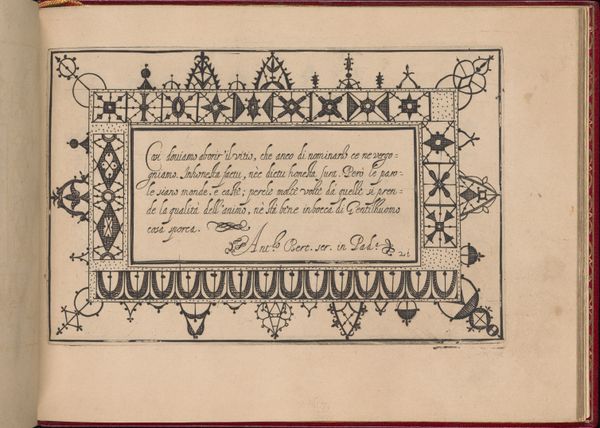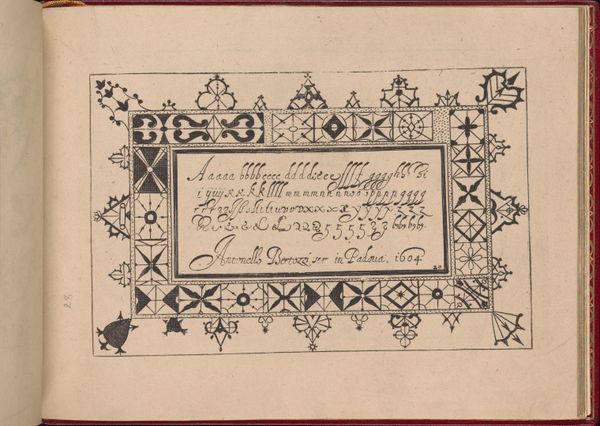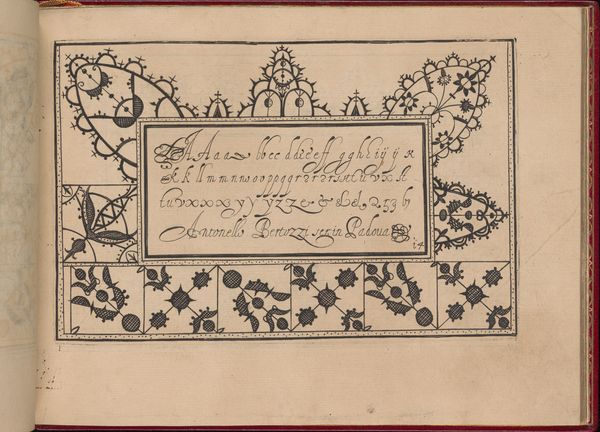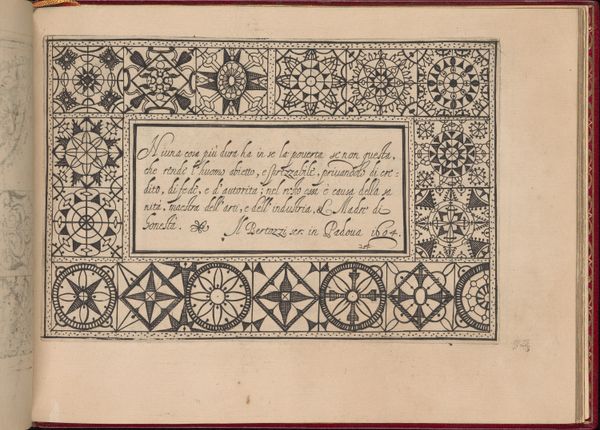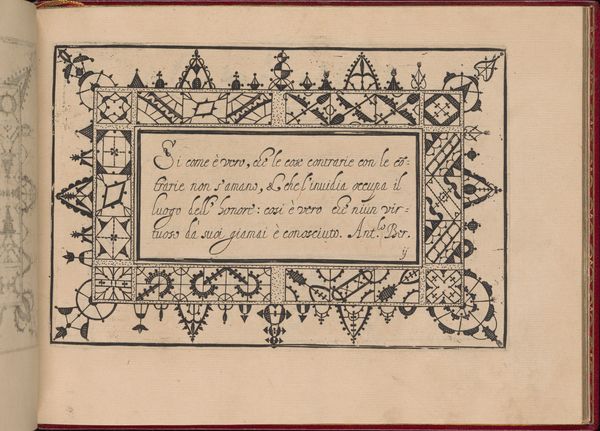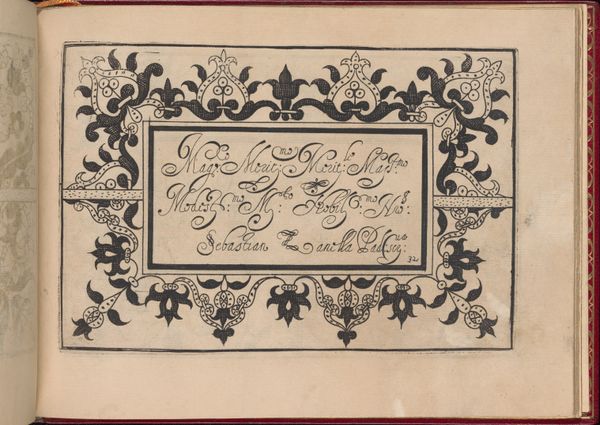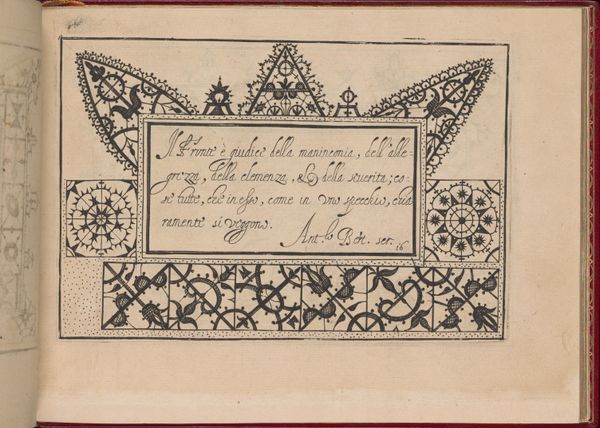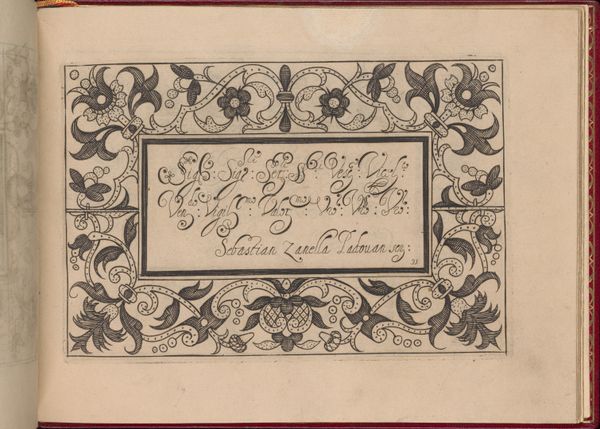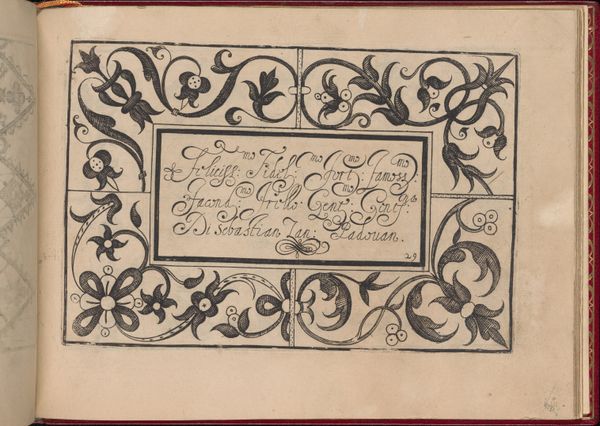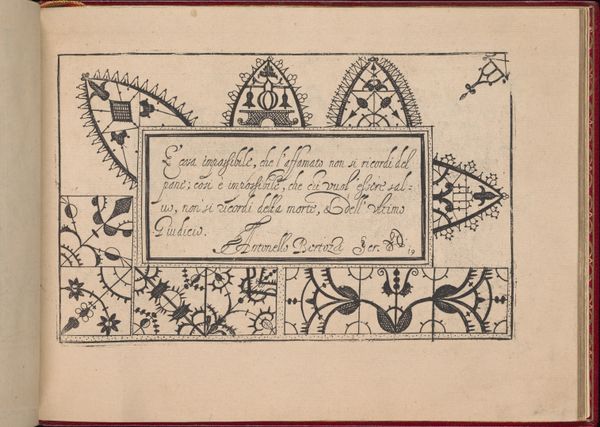
Ghirlanda: Di sei vaghi fiori scielti da piu famosi Giardini d'Italia, page 9 (recto) 1604
0:00
0:00
drawing, print, paper, typography, ink, pen
#
drawing
# print
#
pen sketch
#
book
#
sketch book
#
paper
#
11_renaissance
#
typography
#
ink
#
geometric
#
pen work
#
pen
#
italian-renaissance
#
calligraphy
Dimensions: Overall: 5 7/8 x 7 7/8 in. (15 x 20 cm)
Copyright: Public Domain
Editor: Here we have a page from *Ghirlanda: Di sei vaghi fiori scielti da piu famosi Giardini d'Italia* created in 1604 by Pietro Paulo Tozzi. It’s a print drawing in ink on paper. What strikes me is the frame; it looks like some kind of secret cypher or symbolic border, yet encloses a very standard if beautiful, alphabet. How do you read the relationship between text and frame? Curator: The alphabet nested within a highly ornamented border immediately brings to mind illuminated manuscripts, echoing traditions of emphasizing text with sacred and symbolic weight. Consider how geometric patterns resonate across cultures; these intricate borders almost invoke architectural spaces – perhaps, suggesting a garden as both the title indicates and also a private world of the book, but what are your first thoughts? Editor: It's almost like the border *protects* the alphabet. Each geometric shape looks distinct, a symbol. Curator: Indeed, each motif does appear distinct! Early typography often functioned almost as a coat of arms, a means of representing families, cities or philosophical ideals in printed form. Each emblem carefully drawn served as both ornament *and* carrier of memory. Think about the circles bisected with crosses; what do these shapes tell you? Editor: Hmmm, bisected circles, that looks like wheels, so technology maybe, or just time as cycles and repetition... Curator: Perhaps so, and consider that during the Renaissance, this convergence of art, text and symbolism acted as a potent device to transmit, legitimize, and also encode information in a very turbulent and changing world. It's lovely, don't you agree? Editor: I do. Now I understand better that these ornaments do more than simply fill the page; they actively speak to a history, acting as little time capsules! Curator: Precisely! It reveals how we have perpetually layered meaning into our forms, connecting letters with both artistry and intent.
Comments
No comments
Be the first to comment and join the conversation on the ultimate creative platform.
